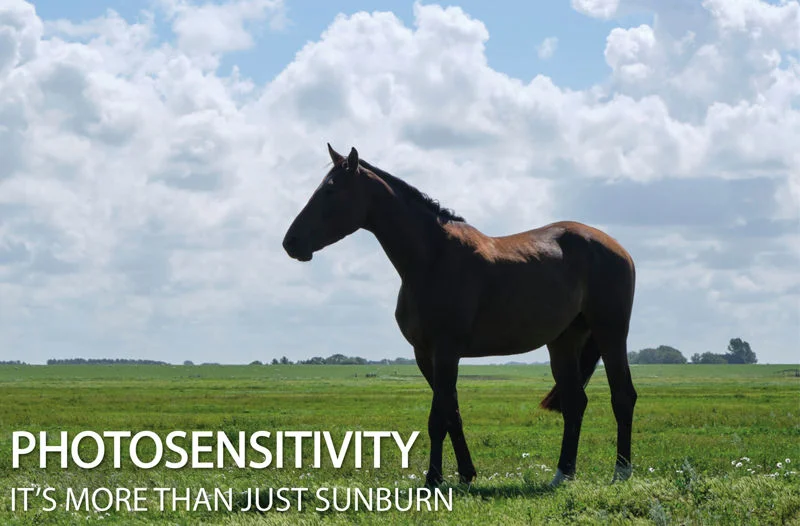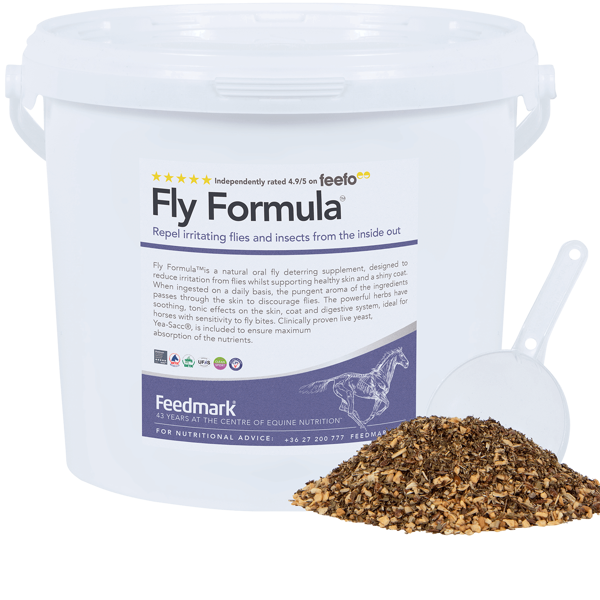With summer just around the corner, we are all hoping for some sunshine and warmer weather. This gives us a chance to spend more time outside with our horses and for them to enjoy being turned out, feeling the sun on their backs.
For some horses, particularly those with pink skin or light-coloured hair, increased exposure to sunlight can risk sunburn and in particular individuals may also trigger Photosensitivity.
Photosensitivity in horses is a condition where the skin becomes overly sensitive to UV light (sunlight). Whilst the symptoms of Photosensitivity are hard to distinguish from sunburn, photosensitivity is a very different condition.
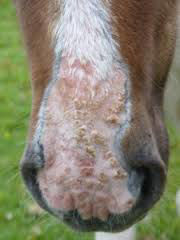
Light pigmented areas are at risk of damage to the dermal tissues.
Sunburn is the outcome of skin having been exposed to strong UV light which causes reddening, inflammation and in severe cases blisters. Photosensitivity is light-induced dermatitis which is caused by a heightened sensitivity of the skin to sunlight. This heightened sensitivity and associated reaction are due to the presence of photodynamic agents called chromophores which are found in the skin.
The clinical signs of photosensitisational dermatitis develop within hours of being exposed to strong sunlight. Hair and pigments in the skin absorb light energy before it activates chromophores helping to protect the skin from damage, however light pigmented areas, and areas with little hair protection such as around the eyes, ears, muzzle, coronary bands, and other lightly haired areas are at risk of damage to the dermal tissues.
Horses with Photosensitivity will develop photophobia and discomfort which presents as scratching or rubbing the ears, eyelids, and muzzle. Areas that are affected by photosensitisation will develop a reddened appearance (erythema), swelling due to trapped fluid in the area (oedema), fluid drainage (serous exudate), scab formation and skin necrosis (skin cell death).

Using a fly mask that covers sensitive areas can help protect against UV rays
What causes Photosensitivity in horses?
Photosensitivity in horses is generally caused by ingestion of certain plants, fungus, drugs, or other chemicals. The photodynamic agents within these sources trigger a reaction that leads to ultra-sensitive skin.
There are two classification of photosensitivity – primary and hepatogenous.
Primary photosensitisation occurs after ingestion of photodynamic agents in certain plants or drug or injection of drugs which contains photodynamic agents. Once these photodynamic agents enter the body they are circulated around and cause damage to the skin cell membrane when it is exposed to UV light.
Hepatogenous Photosensitivity is the most common form of photosensitisation in horses and occurs when horses ingest plants that contain phylloerythrin.
Plants
Certain plants contain chemicals which can trigger Photosensitivity in horses and are best avoided in grazing and forage.
Plants to avoid are:
· Wild Parsnip
A member of the carrot family, this plant can cause photosensitisation when ingested or when the skin comes into contact with the sap.
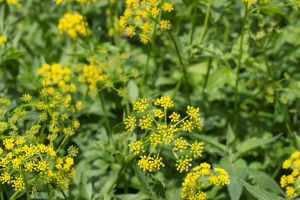
Wild Parsnip
· St John’s Wart
A perennial plant with star shaped yellow flowers. This plant grows up to one meter tall and densely covers open areas.
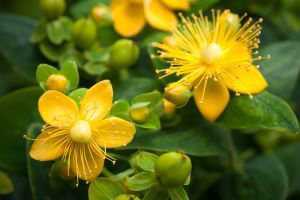
St. John's Wart
· Alsike Clover
A common pasture plant which looks similar to Red or White Clover. Alsike Clover has a small pink flower ½ inch in diameter which forms at the ends of secondary branches from the main stem. Red Clover has a larger flower, hairy stem, and a white inverted ‘v’ on the leaf, similar to White Clover.
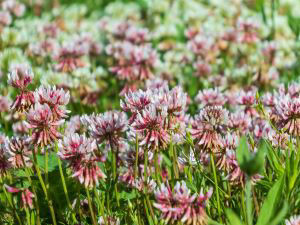
Aslike Clover
· Perennial Ryegrass
A fungus called Pithomyces chartarum grows on ryegrass which is thought to be the cause of photosensitisation. Perennial rygrass is a tough, tufted grass usually found on verges, rough pastures, and waste ground.
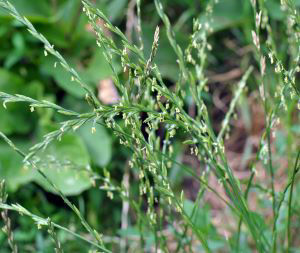
Perennial Ryegrass
Hepatogenous Photosensitivity
Photosensitivity is a common secondary issue for horses with liver damage and is caused by circulating Phylloerythrin. Phylloerythrin is a product of the microbial degradation of chlorophyll in the gut of herbivorous animals. Normally phylloerythrin is excreted by the body, however horses with liver damage are unable to excrete this compound and it is eventually circulated around the body, reaching the skin where, when exposed to UV light causes photosensitisation. Phylloerythrin absorbs UV radiation from the sun and the energy from the activated phylloerythrin molecules is then transferred to the surrounding cells causing chronic inflammation.
Supplemental support for horse with Photosensitivity
Horses with liver damage are more at risk of developing Photosensitivity. Feeding a diet that supports liver function helps to reduce the severity of the complications associated with liver disease in horses. Horses and ponies who are on a special diet to support the liver, benefit from rations that are low in fat, Iron and protein and high in starch. Such diets reduce the workload of the liver during nutrient processing.
Flies are attracted to damaged skin and can increase the risk of secondary infection in lesions caused by Photosensitivity. Keeping flies away will help to keep your horse more comfortable and will reduce the risk of associated issues.
Fly Formula™ is a natural oral fly deterring supplement, designed to reduce irritation from flies whilst supporting healthy skin and a shiny coat. When ingested on a daily basis, the pungent aroma of the ingredients passes through the skin to discourage flies. The powerful herbs have soothing, tonic effects on the skin, coat, and digestive system, ideal for horses with sensitivity to fly bites.












